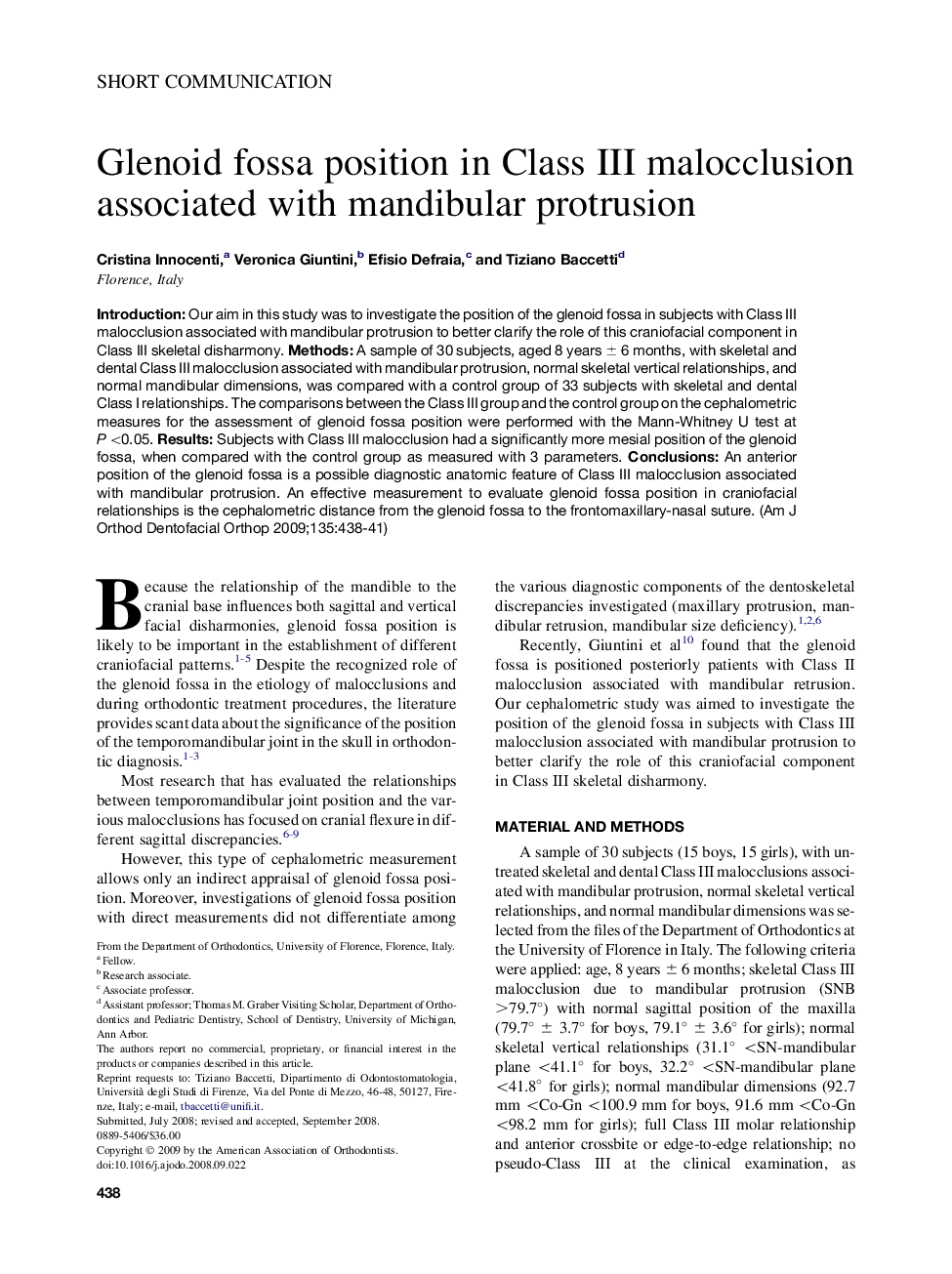| Article ID | Journal | Published Year | Pages | File Type |
|---|---|---|---|---|
| 3119923 | American Journal of Orthodontics and Dentofacial Orthopedics | 2009 | 4 Pages |
IntroductionOur aim in this study was to investigate the position of the glenoid fossa in subjects with Class III malocclusion associated with mandibular protrusion to better clarify the role of this craniofacial component in Class III skeletal disharmony.MethodsA sample of 30 subjects, aged 8 years ± 6 months, with skeletal and dental Class III malocclusion associated with mandibular protrusion, normal skeletal vertical relationships, and normal mandibular dimensions, was compared with a control group of 33 subjects with skeletal and dental Class I relationships. The comparisons between the Class III group and the control group on the cephalometric measures for the assessment of glenoid fossa position were performed with the Mann-Whitney U test at P <0.05.ResultsSubjects with Class III malocclusion had a significantly more mesial position of the glenoid fossa, when compared with the control group as measured with 3 parameters.ConclusionsAn anterior position of the glenoid fossa is a possible diagnostic anatomic feature of Class III malocclusion associated with mandibular protrusion. An effective measurement to evaluate glenoid fossa position in craniofacial relationships is the cephalometric distance from the glenoid fossa to the frontomaxillary-nasal suture.
